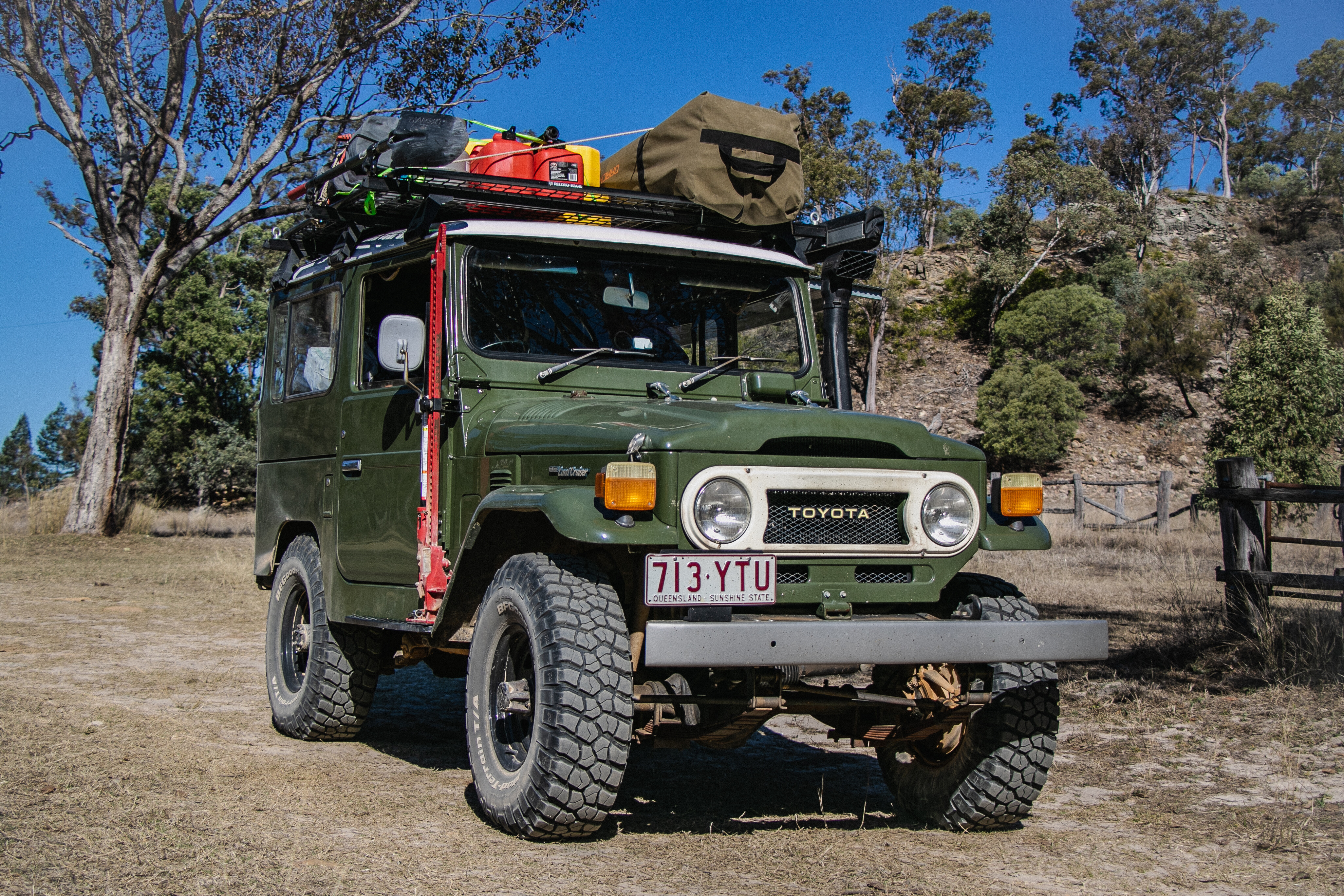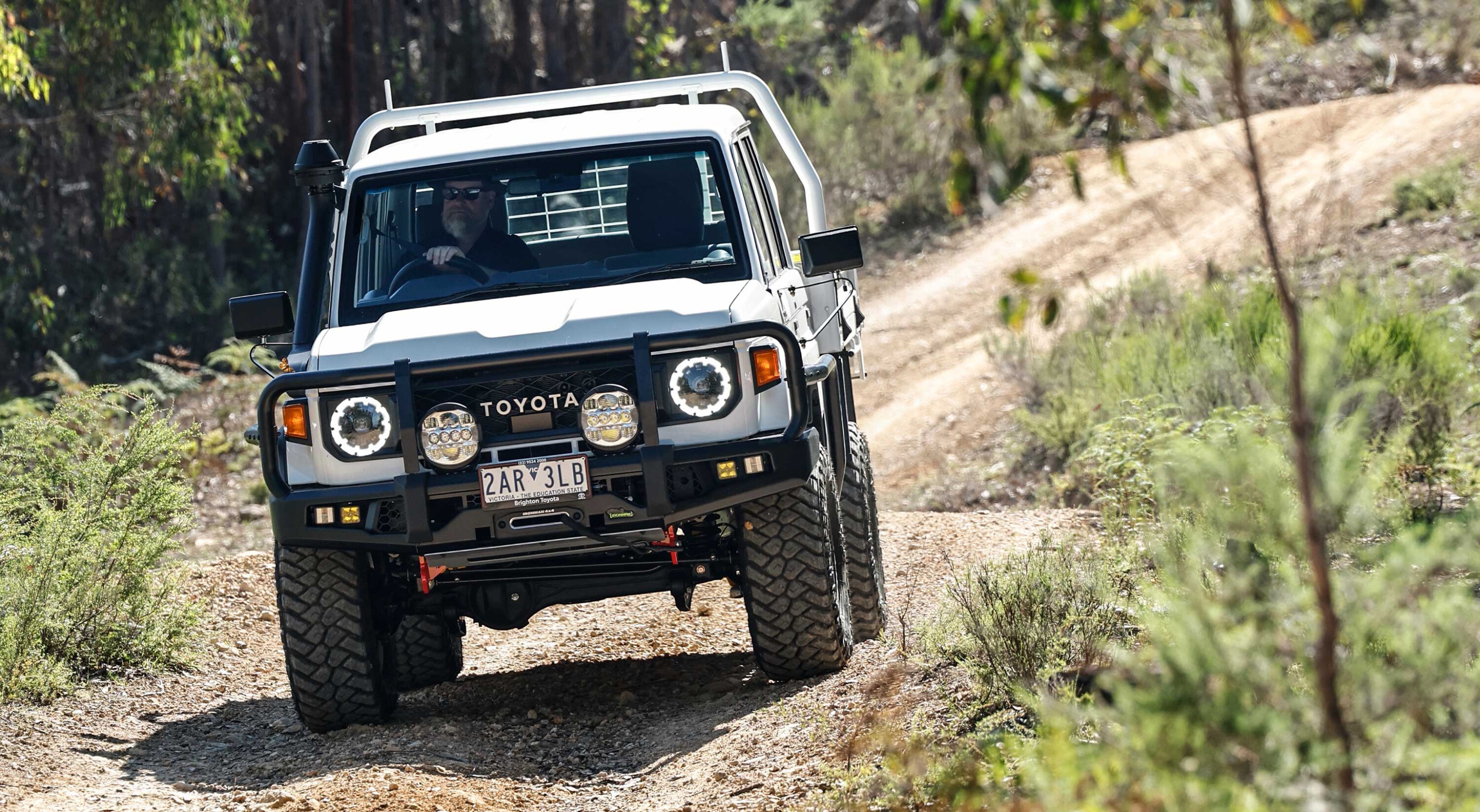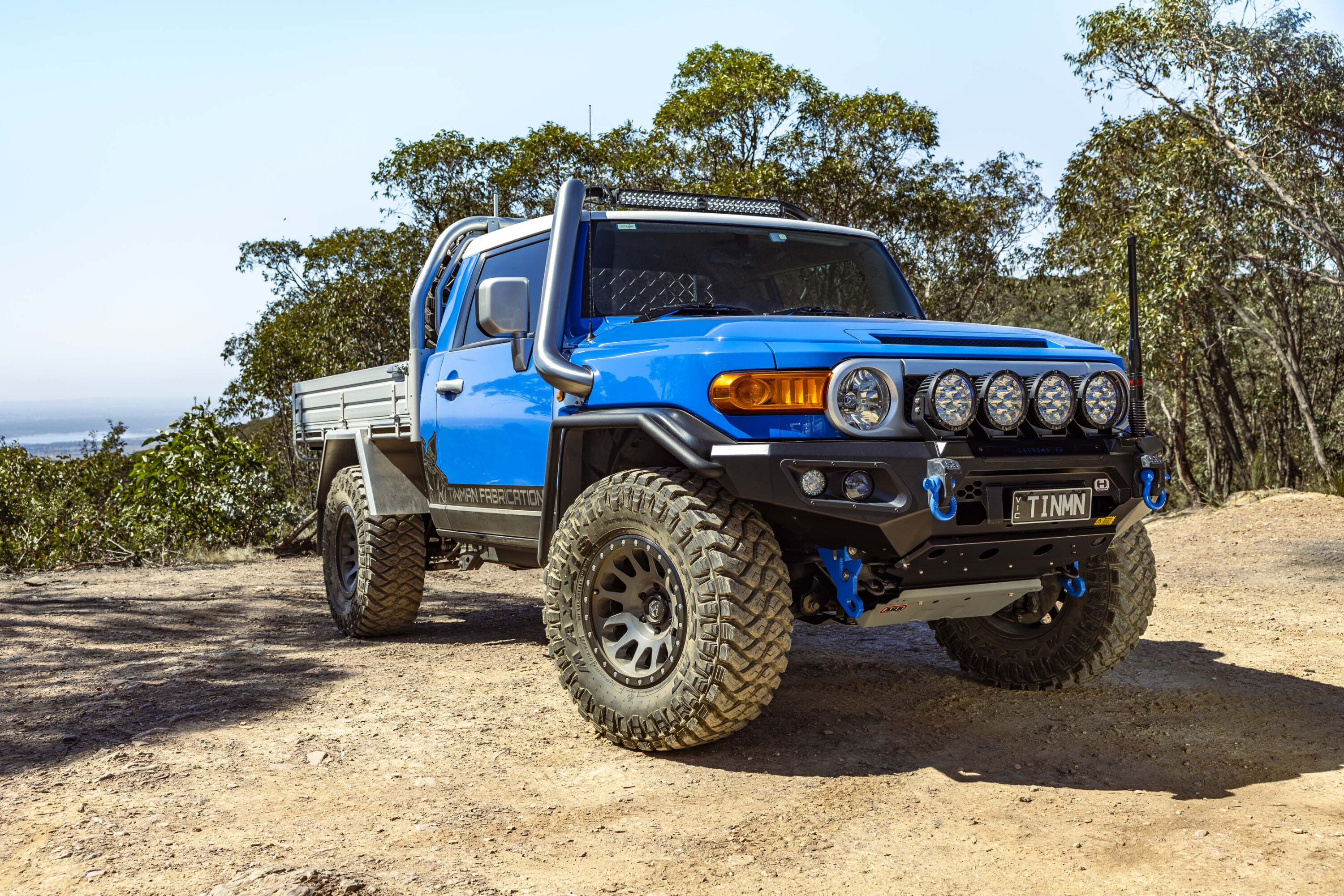Part 1: Woody buys an FJ40 Part 2: Minimalist outback touring
PART 1: WOODY BUYS AN FJ40
It seems being a Land Rover nut and then buying a classic LandCruiser is akin to barracking for both Carlton and Collingwood at the same time, or, if you’re into that other game, the Doggies and the Rabbitohs.
But while old Land Rovers seem to be popular with Instagram hipsters these days, I’ve always had a thing for old Toyota Land Cruisers. Growing up in the bush surrounded by them is probably the reason why, with trayback 45s and shorty 40s seeming to be on the periphery of my life for the past three or four decades. That said, I’ve never actually owned one.
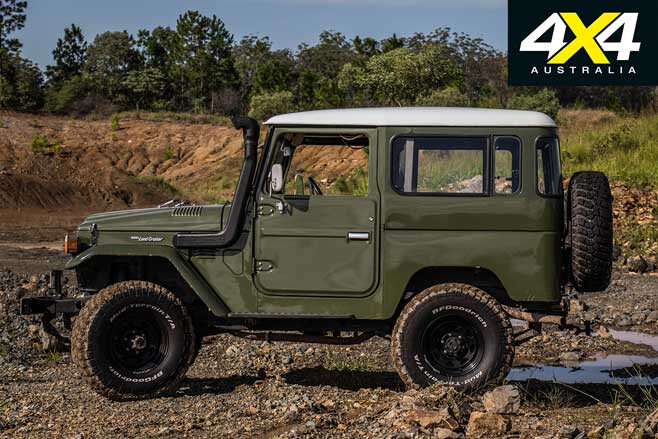
Stateside, prices for old FJ Toyotas have gone nuts, but the sheer volume of Toyota tin on the ground locally has seen Aussie prices remain a little more realistic for the average enthusiast. I’ve always wanted one and have been keeping an eye on the market.
The thing is, I wanted a stock FJ, which is harder to find than you may think. I’d noticed really good examples were getting hard to find and had some pretty serious asking prices. Everything else with a realistic price tag was deep in the heart of project territory.
After a couple of false starts – which nearly saw me buy a diesel Series 1 Land Rover and a late-70s F100 4×4 with a period-correct motorhome installed on its chassis – the FJ40 you see on these pages appeared on my internet browser.
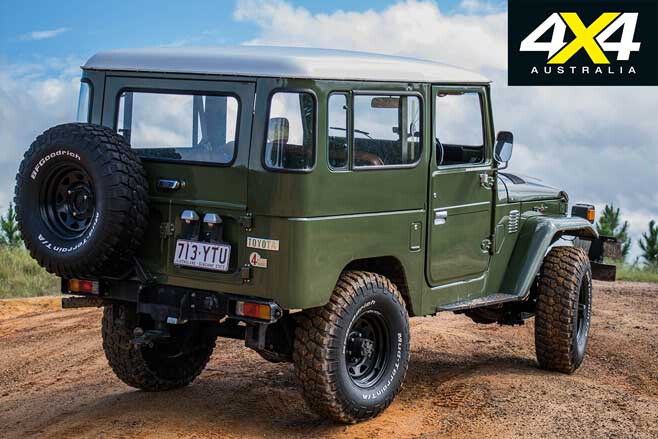
The young bloke I bought it off couldn’t tell me anything about its history, as he’d only owned it for 18 months. To me it looked like an older resto that was never quite finished, but, importantly, it wasn’t rusty or full of bog. It was presentable and I loved the FJ Cruiser Army Green hue, so I managed to negotiate quite a few grand off the hefty asking price and the deal was done.
Getting it on the road required a few minor bits and bobs like bulbs and lenses, an exhaust repair and new wheel cylinders. This truck originally had drum brakes all around, but somewhere along the line someone has thrown later model disc brakes on the front.
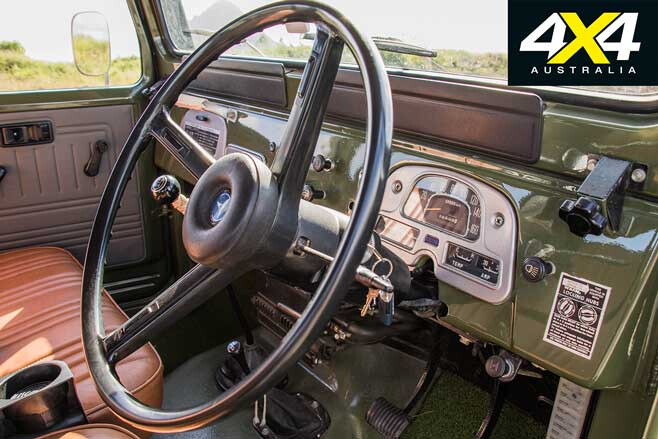
As luck would have it, I have an FJ Toyota guru about one kilometre from my house. Ray Saggal at Hendra Motors, Queensland, is an FJ nut, a bloody good mechanic and, as it turns out, a really nice bloke. Ray handled the brake work and, while we were at it, an electronic ignition was installed.
So now I get to bob along on my cart-sprung Shorty, constantly twitching the wheel to compensate for all the bendy bits and linkages that make up the FJ’s “unique” road-holding equipment. I’d say I’m doing so with a grin, but the smile usually only lasts until the next servo – that 4.2-litre 2F petrol engine may be tough, torquey and reliable, but it drinks like an old-school motoring journo.
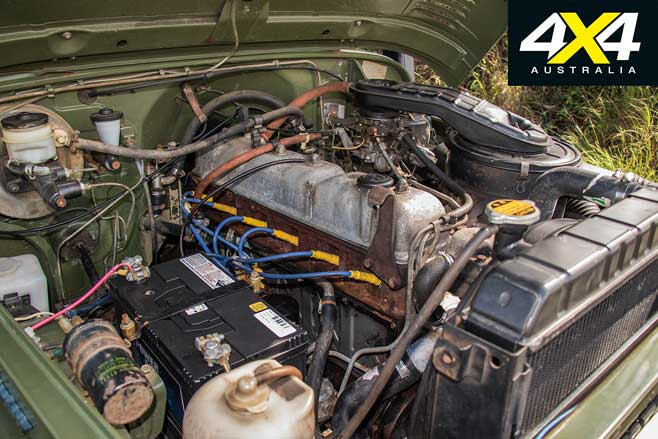
If I’m to take this old banger any distance in the future, I reckon a long-range fuel tank may be on the cards. In the meantime, I’ll need to look at finishing off the interior and installing some sound deadening, because those 33-inch BFG muddies make this thing bloody loud.
I do plan to get it dirty, just carefully dirty. I’ve found there’s something quite stressful about taking a restored 4×4 off-road. So, for the most part it’s a mall crawler. That said, this truck attracts commentary wherever it goes; like so many classic cars, everyone seems to have an FJ Land Cruiser story. I get the feeling that this one’s a keeper. The garage is full, but I did see an awesome FJ55 the other day…
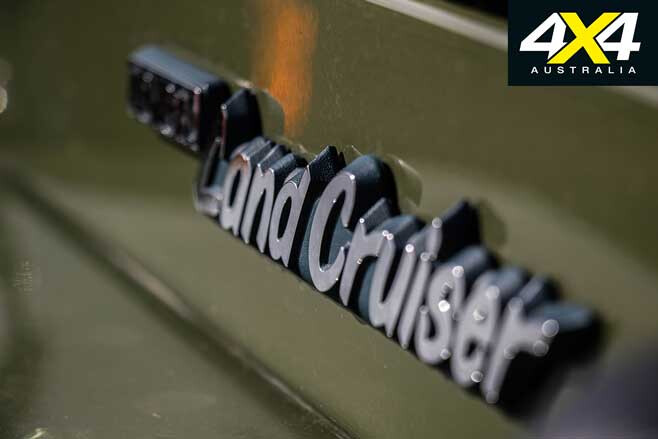
PART 2: MINIMALIST OUTBACK TOURING
Having nice things and being allowed out to use them isn’t something any of us can really take for granted at the moment.
Thankfully a window of opportunity presented itself recently, and both myself and my saintly wife threw some gear in to the shorty and bolted west for an outback adventure. Why saintly, you may ask? She not only tolerated nearly 4000km of outback travel in a short wheelbase, leaf-sprung tin can, she reckons she actually had fun.
You may point out that surely my diesel Perentie was the smarter option for eating outback miles, but until I tackle the high-range issues in the LT95, the little ’Yota is our only bush-driving option.
Anyone who owns a classic car will be familiar with the conversations they generate when you’re out and about. So, you can imagine the amount of old Toyota anecdotes I was assailed with in Western Queensland, from old ringers to former railways workers to other travellers lamenting that they’d sold theirs years ago.
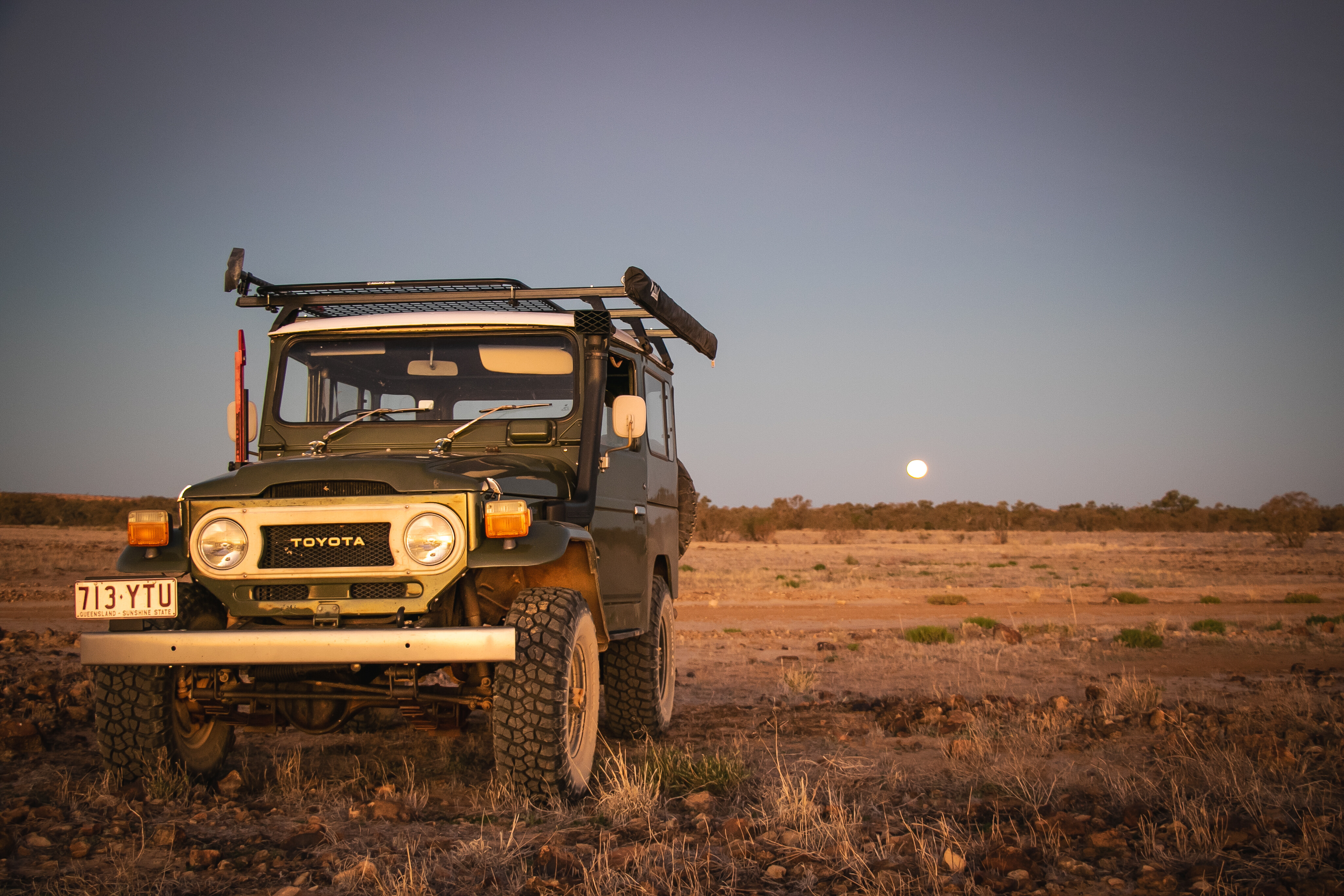
As my significant other hails from the UK, she’s never really seen much of outback Australia, so my plan was to head west out of Brisbane in to the channel country, up through Diamantina Lakes National Park and … er … make the rest up from there.
But as anyone who owns a short-wheelbase 4×4 will tell you, setting up for an extended trip can make packing seem like an extreme sport. I’m not a huge fan of new-style roof racks on old cars, but practicality had to kick in at some stage. It also made fitting an awning possible and gave a spot to stash the swag.
The 2F-powered FJ also provided other challenges in the range and storage department. Being pretty much stock, the shorty is only equipped with a 60-litre under-seat fuel tank.
With the 4×4 accessories industry being flat knacker at the moment, picking up an aftermarket long-range tank wasn’t going to happen in my desired time frame. I ended up dependent on way too many jerry cans, which, unfortunately, all ended up on the roof rack, which isn’t great for vehicle dynamics on- or off-road.
A new water pump and stainless-steel exhaust system were fitted before hitting the road. I also gave the old girl a grease, oil change and a good check over before turning a wheel.
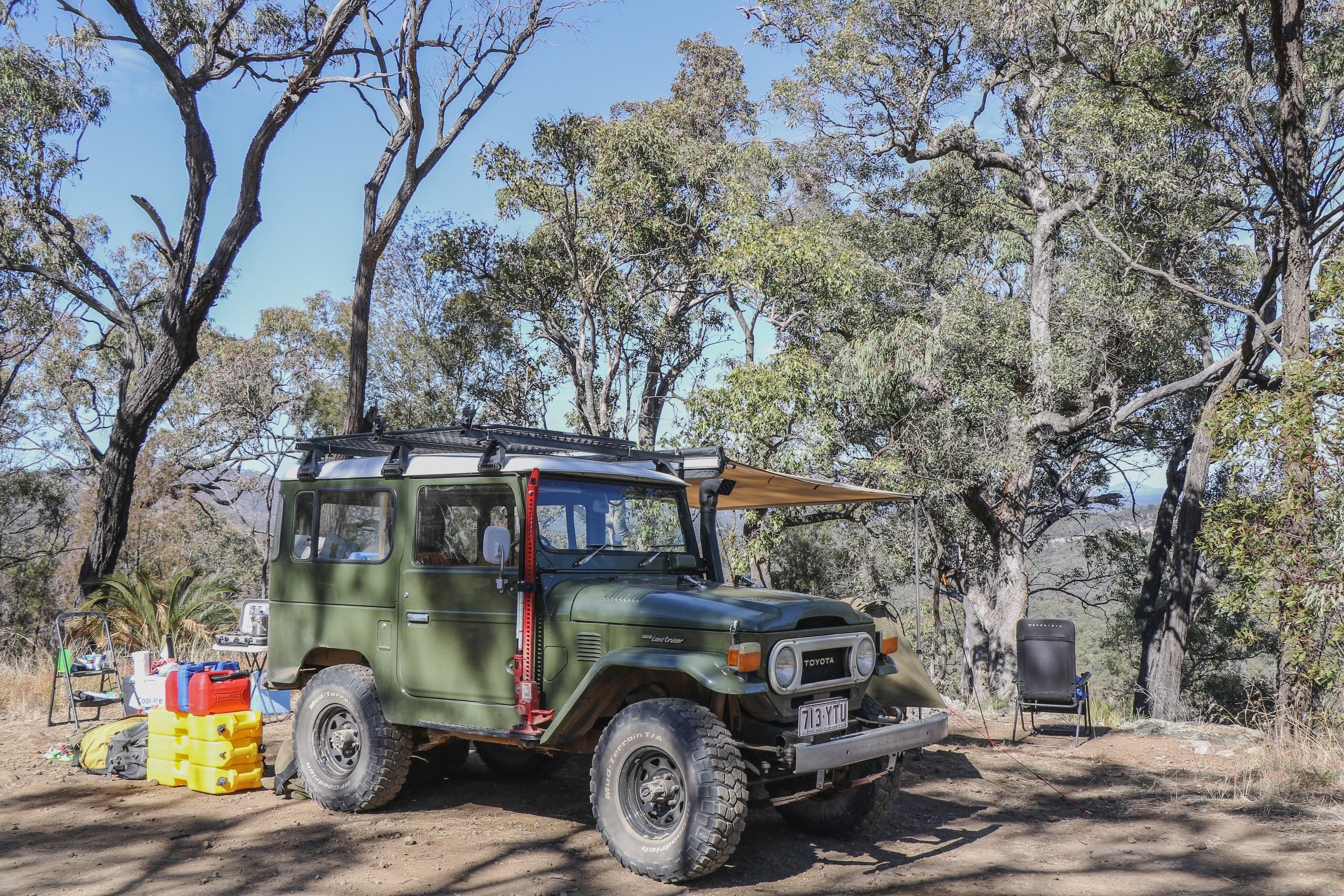
After a few days on the road in a SWB, you get in to a rhythm of unpacking and setting up. It really is amazing just how much you can fit in if you need to.
The sense of being remote didn’t hit us until we were trundling across Davenport Downs Station, as the cattle-specked horizon shimmered in the gibber plain heat haze. The Hunter Gorge campsite on the Diamantina is a great (if busy) spot to roll out the swag for a couple of days when there’s water in the system. The abundant birdlife wheels and dives against the backdrop of the Goyder and Hamilton ranges.
The shorty developed a misfire, which turned out to be as simple as a loose plug lead. After a visit to Boulia (and showers) we turned east and slowly wound our way towards a part of Queensland I’d never explored, the Central Highlands. The road from Injune to Mt Moffatt (Carnarvon National Park) is okay and sealed for about 100 or so kays, but quickly turns to an unsealed, rutted mess that had us crawling along in places.
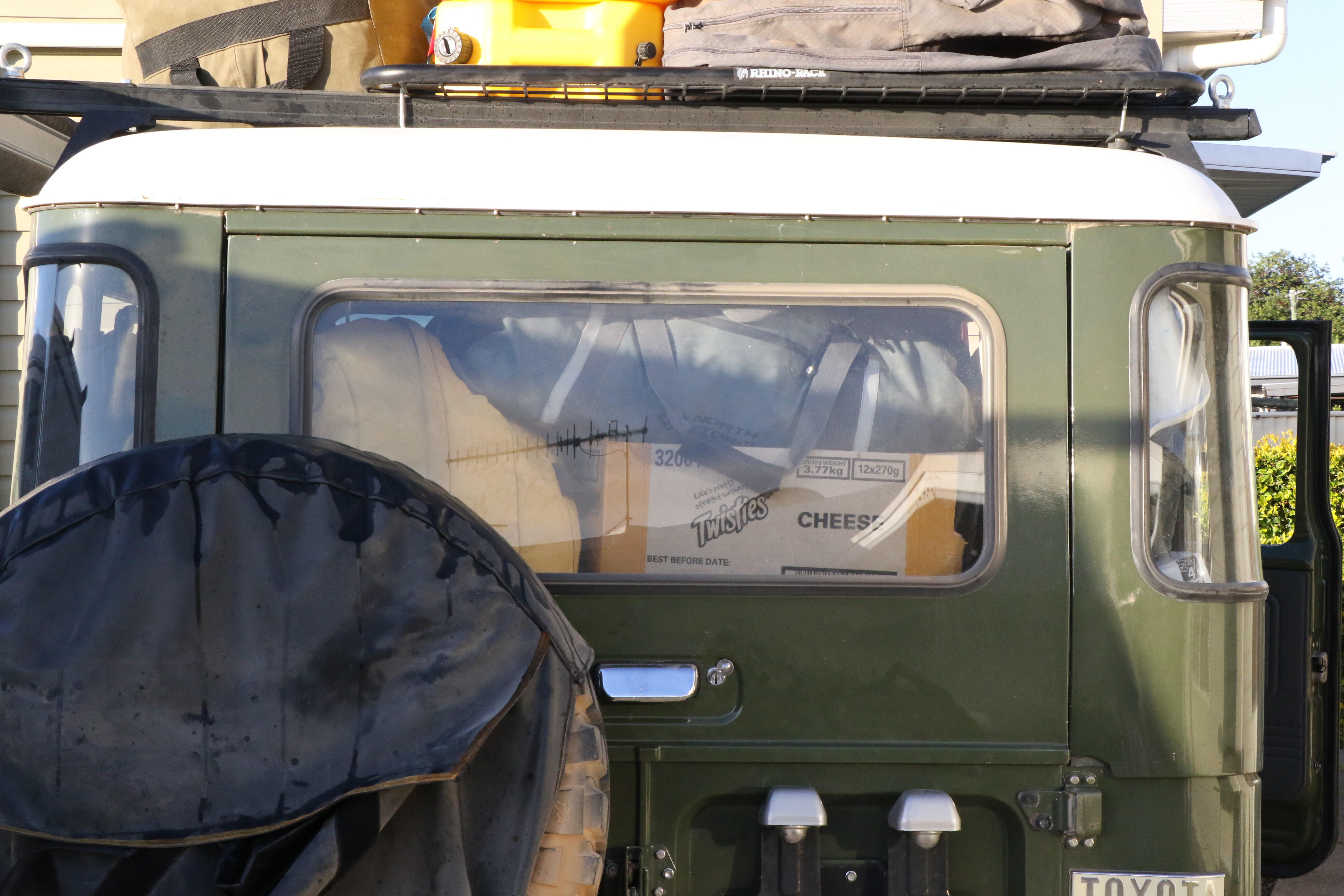
The 4×4-only access track that leads to the Top Rotary campsite saw me lose a jerry can off the roof at one stage, but when you reach the site it provides stunning views south across the Great Dividing Range. It’s one of the best sites I’ve stayed at. The day-use lookout area above is accessed by a pretty gnarly climb that requires some commitment to scale in an old banger like mine; but once you get there, you have an awesome northern vantage point back towards Carnarvon Gorge.
While packing and unpacking requires a little time and effort, there’s something quite rewarding about travelling simply. A 50-litre fridge and an AGM-equipped battery box were our only real mod cons. There’s a freedom to just rolling out a swag, lighting a fire and cooking a roast on a shovel.
The Cruiser unsurprisingly did what Cruisers do; reliably, simply and maybe lacking a little finesse. Also unsurprisingly it used a lot of fuel, a fuel average of 27L/100km, with a highway cruising speed of 85km/h. A long-range fuel tank is most definitely in our future!
Total kilometres: 88,806km Date acquired: July 2020 Price (as tested): $18,500 Kilometres since last update: 3851km Average fuel use: 27L/100km

